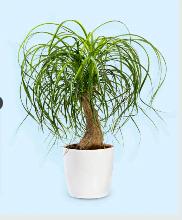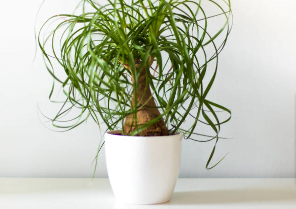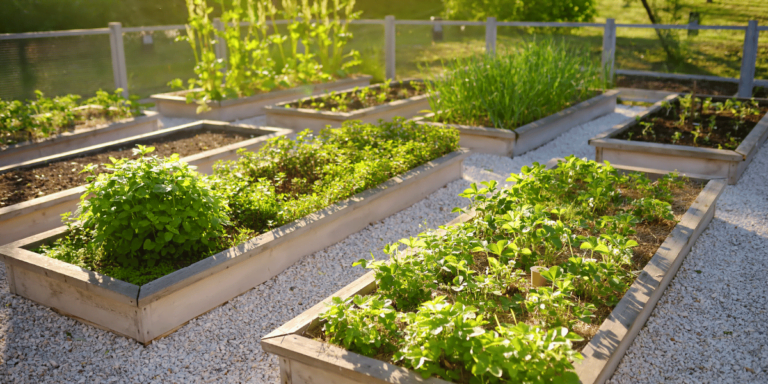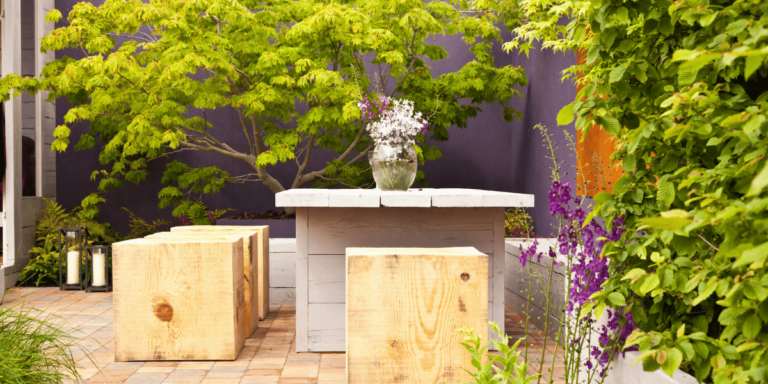Introduction
The Ponytail Palm, scientifically known as Beaucarnea recurvata, is not only a captivating indoor plant with its unique, cascading leaves and bulbous trunk, but it’s also an embodiment of resilience and adaptability. This detailed review aims to highlight the essential care tips and methods that can ensure your Ponytail Palm flourishes within your indoor space. With the right amount of attention to light, soil, and other essential factors, this plant will be a show-stopping centerpiece in your home or office.
Ponytail Palm (Beaucarnea recurvata) Indoor Plant Details
| Specification | Details |
|---|---|
| Common Names | Large ponytail palm, Bottle Palm, Elephant Foot Tree |
| Botanical Name | Beaucarnea recurvata |
| Family | Asparagaceae |
| Plant Type | Succulent |
| Mature Size | Up to 8-10 feet indoors (can grow larger outdoors) |
| Sun Exposure | Bright, indirect light. Can tolerate some direct morning sunlight |
| Soil Type | Well-draining soil; cactus or succulent mix recommended |
| Soil pH | Slightly acidic to slightly alkaline (6.0 to 7.5) |
| Bloom Time | Rare indoors; usually in mature plants and in summer outdoors |
| Flower Color | Creamy white to yellow |
| Hardiness Zones | 10-11 (used as an indoor plant in cooler zones) |
| Native Area | Eastern Mexico |
Large ponytail palm Plant Care
Diving into plant care, the Ponytail Palm isn’t overly demanding. Its origin in the semi-desert regions of Mexico ensures its hardiness. Therefore, understanding its natural habitat can shed light on the care it requires. With its long, thin leaves cascading from the top, it becomes an ornamental focal point in any space.
Light
Adept at handling bright, indirect light, the Ponytail Palm flourishes when placed near east, west, or south-facing windows. The morning sunlight is particularly beneficial for this plant. However, if direct light seems too harsh, consider using sheer curtains to diffuse it. If your space doesn’t receive adequate natural light, don’t despair. This versatile plant can tolerate lower light conditions, although its growth may be slower.
Soil
Well-draining soil is paramount for the Ponytail Palm. Its bulbous trunk, known as a caudex, stores water. Thus, avoiding soil that retains excessive moisture can prevent root rot. A cactus or succulent mix works wonders. If using regular potting soil, consider adding sand or perlite to improve drainage.
Water
Contrary to some houseplants, the Ponytail Palm thrives on being watered sparingly. It’s crucial to let the soil dry out between watering sessions. Overwatering can lead to the plant’s downfall, especially in winters when the plant is in a dormant phase. Using the “soak and dry” method is ideal. When watering, ensure the soil is saturated but ensure there’s no standing water at the bottom of the pot.
Temperature and Humidity
Resilient and adaptable, the Ponytail Palm thrives in a temperature range of 65-75°F (18-24°C) during the day and slightly cooler at night. While it can handle slight fluctuations, it’s crucial to keep it away from drafts or sudden temperature drops. As for humidity, this desert-native plant isn’t fussy. Average indoor humidity works perfectly, eliminating the need for a humidifier.
Fertilizer
While not a demanding plant, a little nutrition can boost its growth. Fertilize sparingly using a liquid or granular slow-release fertilizer, preferably one designed for cacti or succulents. The ideal frequency is once in the spring and once in the summer. Over-fertilizing can do more harm than good, causing weak growth or even burning the plant.
Pruning
The main reason to prune a Ponytail Palm is aesthetics. If the leaves become brown or dry at the tips, they can be trimmed using clean, sharp scissors. While pruning isn’t mandatory for the plant’s health, it can enhance its appearance.
Overwintering
As temperatures drop, the Ponytail Palm requires special attention. It’s vital to reduce watering and ensure the plant isn’t exposed to freezing temperatures. If you live in a region with cold winters and your plant resides outside, consider bringing it indoors or providing some form of protection.
Propagating Plant
While a slower process, propagation ensures you have more of this mesmerizing plant to enjoy or share. Seeds or offsets (baby plants) that appear at the plant’s base are the primary methods. For seeds, a well-draining soil mix, warmth, and patience are key. If using offsets, detaching them carefully and planting them in similar soil will yield the best results.
Quickly Declining
If your Ponytail Palm appears to be on a downward spiral, it’s often due to overwatering, insufficient light, or pest infestations. Addressing these issues promptly can often resurrect your plant.
Types of Plant
The Ponytail Palm, also known as Beaucarnea recurvata, might be the most well-known, but there are various types under the Beaucarnea genus. While they all share some general care similarities, each has distinct characteristics:
- Beaucarnea gracilis: This variety is native to Mexico and is characterized by a slender trunk and long, narrow leaves.
- Beaucarnea goldmanii: Found primarily in Chiapas, Mexico, it’s recognized by its dense crown and broad leaves.
- Beaucarnea stricta: Native to Oaxaca, Mexico, this type has an upright growth habit and is less likely to develop the distinct bulbous base.
Each type offers a unique aesthetic, but their care largely remains consistent with the guidelines provided for Beaucarnea recurvata.
Common Pests & Plant Diseases with Solution
Like all indoor plants, the Ponytail Palm is susceptible to certain pests and diseases.
- Mealybugs: These are small, white insects that can be found on the plant’s leaves and stems. They suck sap and can weaken the plant.
Solution: Wipe the plant down with a cloth soaked in soapy water. If the infestation is severe, consider using neem oil or insecticidal soap.
- Mealybugs: These are small, white insects that can be found on the plant’s leaves and stems. They suck sap and can weaken the plant.
- Spider Mites: They are tiny pests that live on the undersides of leaves and feed by piercing and sucking out the plant’s fluids.
Solution: Increase humidity, as mites thrive in dry conditions. You can also wipe the plant with soapy water or use neem oil.
- Spider Mites: They are tiny pests that live on the undersides of leaves and feed by piercing and sucking out the plant’s fluids.
- Rot: Overwatering can cause the roots to rot.
Solution: Ensure the plant is in well-draining soil, reduce the frequency of watering, and ensure the pot has drainage holes. If the plant is severely affected, consider repotting it.
- Rot: Overwatering can cause the roots to rot.
How to Get Ponytail Palm to Bloom
While it’s a rare occurrence indoors, Ponytail Palms can produce creamy white or yellow flowers on long spikes. To encourage blooming:
- Maturity: Ensure your plant is mature. They typically bloom after several years.
- Provide adequate light: Position the plant in bright, indirect light to simulate its natural habitat.
- Limit water: Mimic its natural desert habitat by watering sparingly.
- Feed appropriately: Using a balanced liquid fertilizer during the growing season can give it the necessary nutrients.
Remember, even with these conditions met, indoor blooming is a rare spectacle. But when it does happen, it’s a delightful reward for your care!
Common Problems With Plant
Several issues can arise with the Ponytail Palm:
- Leaf Browning or Yellowing: This can result from overwatering, too much direct sunlight, or a lack of essential nutrients.
- Leaf Dropping: If the Ponytail Palm starts dropping its leaves, it’s often a sign of overwatering.
- Stunted Growth: If your plant isn’t growing, it might be receiving insufficient light or may be pot-bound.
- Soft, Mushy Trunk: This is a clear sign of overwatering. The trunk should always feel firm to the touch.
Thriving Tips: Our Final Thoughts
The Ponytail Palm is a testament to beauty and resilience. With the right balance of light, water, and soil conditions, it can be a long-lasting and endearing part of your indoor plant collection. While it’s forgiving of occasional neglect, a consistent care routine ensures it not only survives but thrives.
Frequently Asked Questions
Decode the magic of gardens with our guide to Landscaping Styles Frequently Asked Questions.
- No, it’s not a true palm. It belongs to the Asparagaceae family and is more closely related to agaves than palms
- Brown tips can be a result of overwatering, low humidity, or excessive fertilization. Trimming the brown parts and adjusting care practices can help.
- Repotting is typically needed every 2-3 years, or when the plant becomes root-bound or outgrows its pot.
- No, the Ponytail Palm is considered non-toxic to both cats and dogs.

















